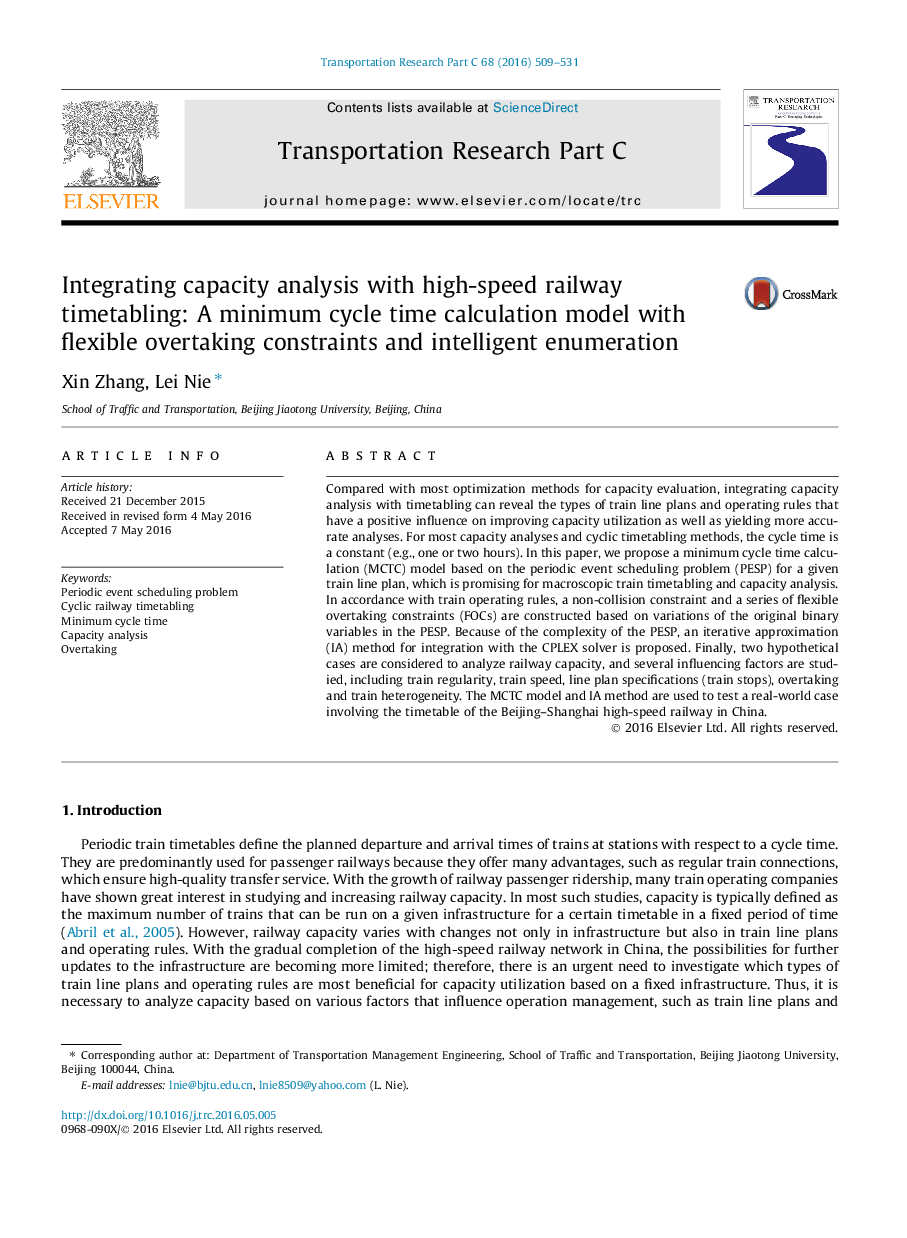| کد مقاله | کد نشریه | سال انتشار | مقاله انگلیسی | نسخه تمام متن |
|---|---|---|---|---|
| 6936449 | 868856 | 2016 | 23 صفحه PDF | دانلود رایگان |
عنوان انگلیسی مقاله ISI
Integrating capacity analysis with high-speed railway timetabling: A minimum cycle time calculation model with flexible overtaking constraints and intelligent enumeration
ترجمه فارسی عنوان
تجزیه و تحلیل ظرفیت ادغام با زمانبندی سرعت بالا راه آهن: حداقل مدل محاسبه زمان چرخه با محدودیت های انعطاف پذیری و شمارش هوشمند
دانلود مقاله + سفارش ترجمه
دانلود مقاله ISI انگلیسی
رایگان برای ایرانیان
کلمات کلیدی
مشکل برنامه ریزی رویداد دوره ای زمانبندی راه آهن چرخه، حداقل زمان چرخه، تجزیه و تحلیل ظرفیت، توفان،
موضوعات مرتبط
مهندسی و علوم پایه
مهندسی کامپیوتر
نرم افزارهای علوم کامپیوتر
چکیده انگلیسی
Compared with most optimization methods for capacity evaluation, integrating capacity analysis with timetabling can reveal the types of train line plans and operating rules that have a positive influence on improving capacity utilization as well as yielding more accurate analyses. For most capacity analyses and cyclic timetabling methods, the cycle time is a constant (e.g., one or two hours). In this paper, we propose a minimum cycle time calculation (MCTC) model based on the periodic event scheduling problem (PESP) for a given train line plan, which is promising for macroscopic train timetabling and capacity analysis. In accordance with train operating rules, a non-collision constraint and a series of flexible overtaking constraints (FOCs) are constructed based on variations of the original binary variables in the PESP. Because of the complexity of the PESP, an iterative approximation (IA) method for integration with the CPLEX solver is proposed. Finally, two hypothetical cases are considered to analyze railway capacity, and several influencing factors are studied, including train regularity, train speed, line plan specifications (train stops), overtaking and train heterogeneity. The MCTC model and IA method are used to test a real-world case involving the timetable of the Beijing-Shanghai high-speed railway in China.
ناشر
Database: Elsevier - ScienceDirect (ساینس دایرکت)
Journal: Transportation Research Part C: Emerging Technologies - Volume 68, July 2016, Pages 509-531
Journal: Transportation Research Part C: Emerging Technologies - Volume 68, July 2016, Pages 509-531
نویسندگان
Xin Zhang, Lei Nie,
